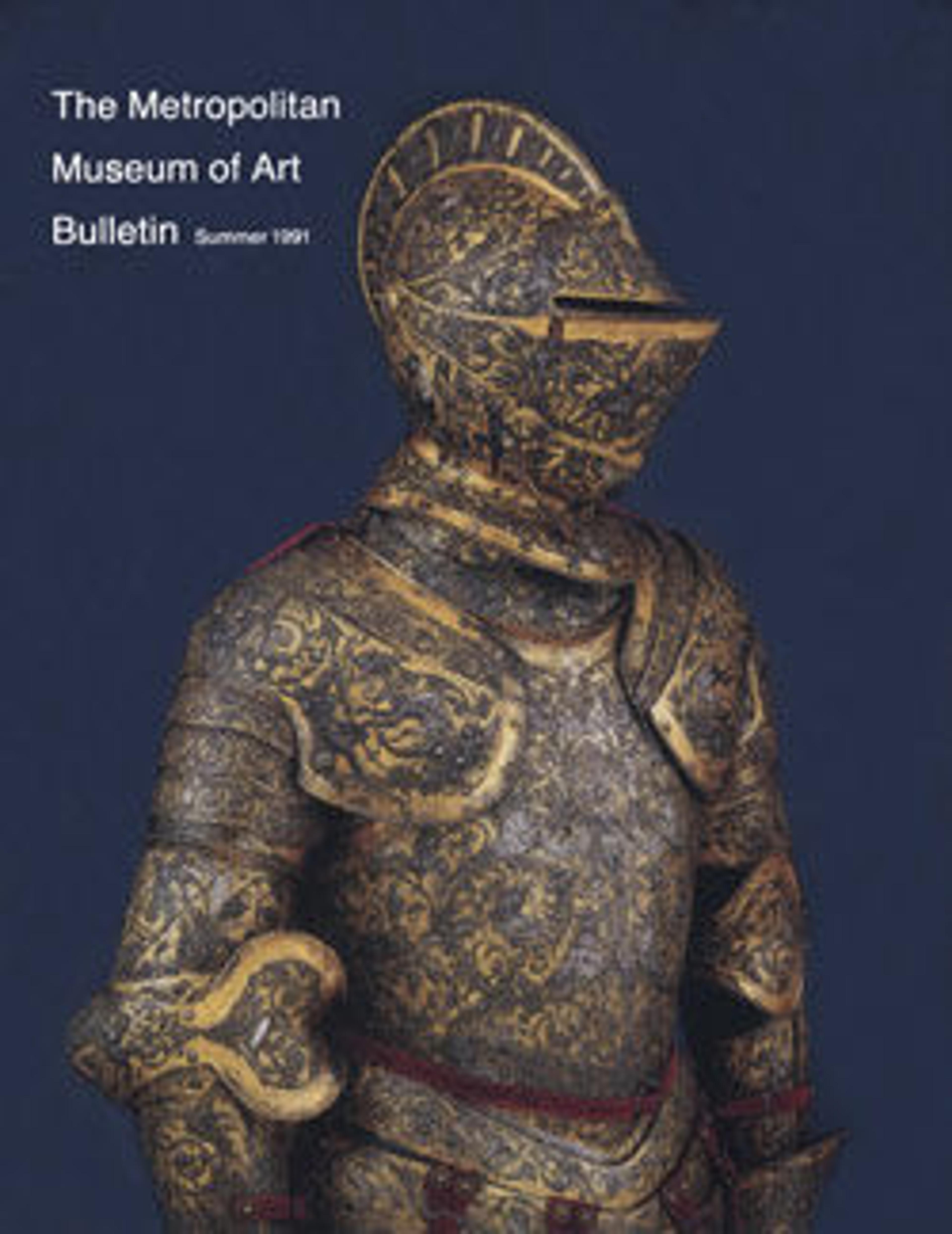Hungarian-Style Shield
This wing-shaped shield and others like it in the Metropolitan Museum's collection (42.50.29, .30), with the distinctive upward-sweeping back edge, were the characteristic light-cavalry shields of Hungary. During the sixteenth century, the style was adopted across much of eastern Europe by both Christian and Islamic horsemen. The shield's elongated upper edge was designed to defend the back of the head and neck against cuts from a saber, the preferred cavalry weapon in that region.
This shield is painted on its exterior with the double-bladed sword of the prophet Muhammad and on its interior with the Crucifix and instruments of the Passion. This unusual mix of Islamic and Christian symbols suggests that the shield was used in a tournament by a Christian warrior dressed in Muslim fashion. In these "Hungarian style" tournaments, the participants wore Hungarian and Turkish costumes and used sabers to strike off feathers attached to their opponents' helmets and to the apex of their painted shields. Even at a time when Turkish armies were a constant threat to eastern Europe, their costumes and tactics were imitated by their foes.
This shield is painted on its exterior with the double-bladed sword of the prophet Muhammad and on its interior with the Crucifix and instruments of the Passion. This unusual mix of Islamic and Christian symbols suggests that the shield was used in a tournament by a Christian warrior dressed in Muslim fashion. In these "Hungarian style" tournaments, the participants wore Hungarian and Turkish costumes and used sabers to strike off feathers attached to their opponents' helmets and to the apex of their painted shields. Even at a time when Turkish armies were a constant threat to eastern Europe, their costumes and tactics were imitated by their foes.
Artwork Details
- Title:Hungarian-Style Shield
- Date:ca. 1500–1550
- Culture:Eastern European
- Medium:Wood, leather, gesso, polychromy
- Dimensions:H. 32 1/2 in. (82.55 cm); W. 21 5/8 in. (54.91 cm)
- Classification:Shields
- Credit Line:Rogers Fund, 1949
- Object Number:49.57.1
- Curatorial Department: Arms and Armor
More Artwork
Research Resources
The Met provides unparalleled resources for research and welcomes an international community of students and scholars. The Met's Open Access API is where creators and researchers can connect to the The Met collection. Open Access data and public domain images are available for unrestricted commercial and noncommercial use without permission or fee.
To request images under copyright and other restrictions, please use this Image Request form.
Feedback
We continue to research and examine historical and cultural context for objects in The Met collection. If you have comments or questions about this object record, please contact us using the form below. The Museum looks forward to receiving your comments.
